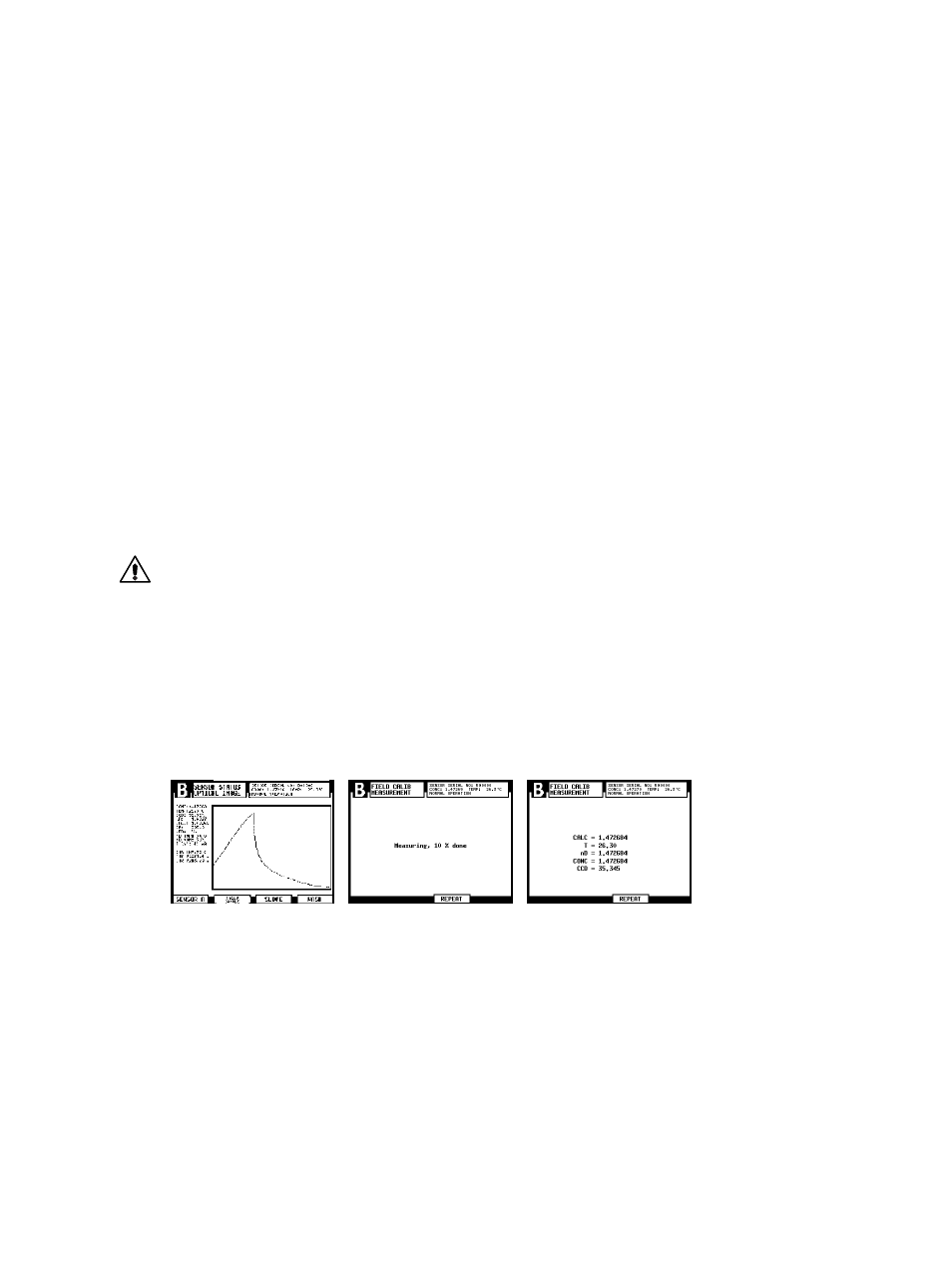K-Patents PR-23 User Manual
Page 58

50
PR-23 instruction manual
For a complete report, 10–15 valid data points (see below) are needed. A data point
is of use for calibration only when the diagnostic message is
NORMAL OPERATION
. If prism
wash is employed, do not take samples during the wash. Each data point consists of:
LAB%
Sample concentration determined by the user
From DTR display:
(see Figure 6.13)
CALC
Calculated concentration value
T
Process temperature measurement in Centigrade
nD
Actual refractive index n
D
CONC
Measurement in concentration units, the large size number
In addition to the calibration data, write down the Indicating transmitter serial num-
ber, the sensor serial number and the sensor position, i.e. whether it is installed as
Sensor A or as Sensor B.
Accurate calibration is only achieved if the sample is taken correctly. Pay special at-
tention to following details:
− The sampling valve and the refractometer should be installed close to each other
in the process.
Warning! Wear protective clothing appropriate to your process when operating the
sampling valve and handling the sample.
− Run the sample before starting to collect data points to avoid sampling old process
liquid that has remained in the sampling valve.
− Read the values
CALC
,
T
(emp),
nD
and
CONC
in the DTR’s display at exactly the same
time with sampling.
The easiest way of doing this is to use the
FIELD SAMPLE
soft key available through
the Sensor status display (DTR program version 2.0 or newer). The value of each
sample is the average of 10 consequent measurements to increase accuracy and
reduce possible process noise.
Press the
FIELD
SAMPLE
soft key...
...wait while
DTR measures...
(take sample for lab)
...and press
REPEAT
for next
data point or BACK to get to
the Sensor status display.
Figure 6.13
Using
FIELD SAMPLE
soft key
− Use a tight container for the sample to avoid evaporation.
